On the morning of August 7, after eating our last breakfast in the village—some leftover instant noodles—the children from Cool Light Village and the volunteers set out for the Xiangxi Woodcut Academy in the ancient town of Pu to exhibit our works.
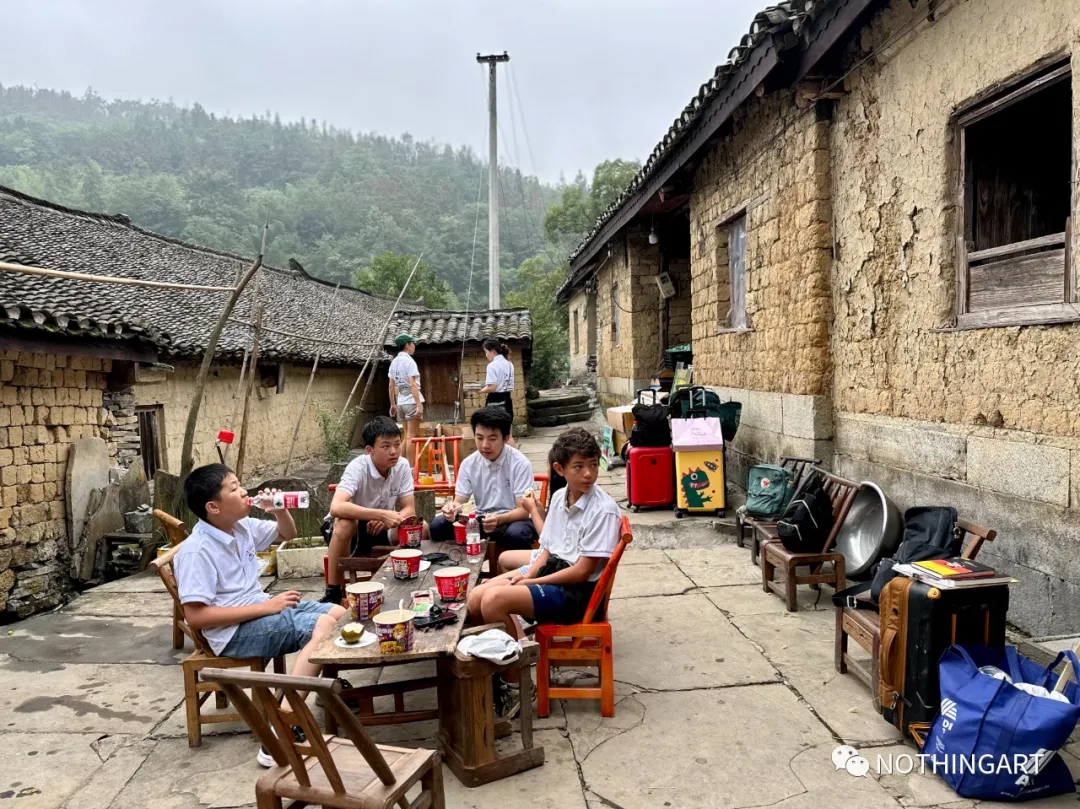
After sharing these few bowls of instant noodles, we set off from Cool Light Village.
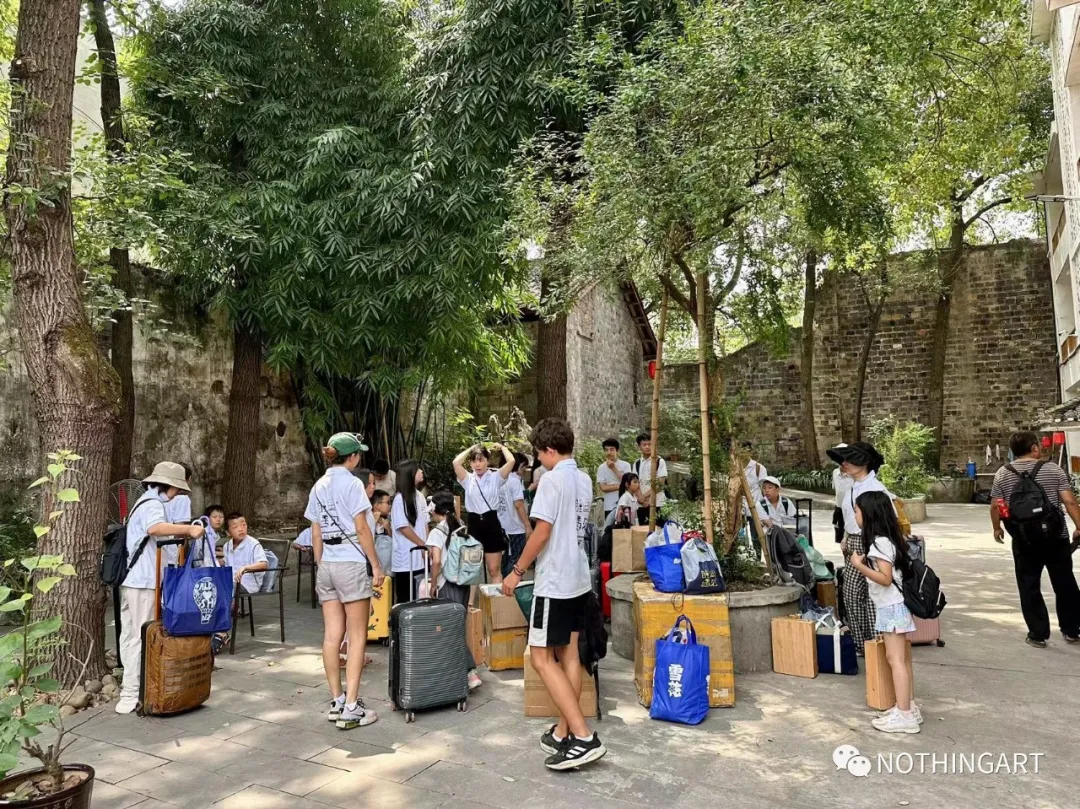
Arriving at the Xi Mountain Travel Sketching Base in the ancient town of Pu.
The main building of the Xiangxi Woodcut Academy is an artistic creation space that combines traditional Miao wooden architecture with modern design, covered in green vines, making it look vibrant. Inside, the academy has creation zones, exhibition areas, educational spaces, and exchange zones, serving as an integrated art institution for creation, exhibition, education, and exchange, representing the high level and unique artistic charm of the Xiangxi region.
We followed Mr. Zhu Jianxiang, the director who came specially to meet us, on a tour of the Xiangxi Woodcut Academy.
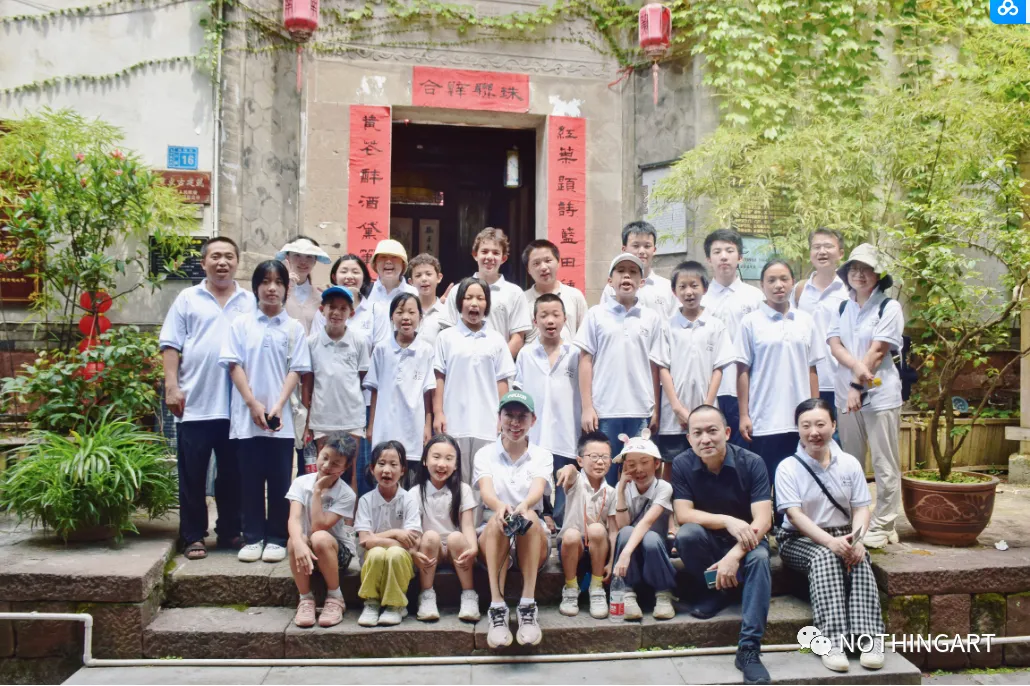
The Xiangxi Woodcut Academy is made up of two old buildings connected together. “Pure View® Cool Light Miao Village” participants and Mr. Zhu Jianxiang took a group photo in front of the academy’s entrance.
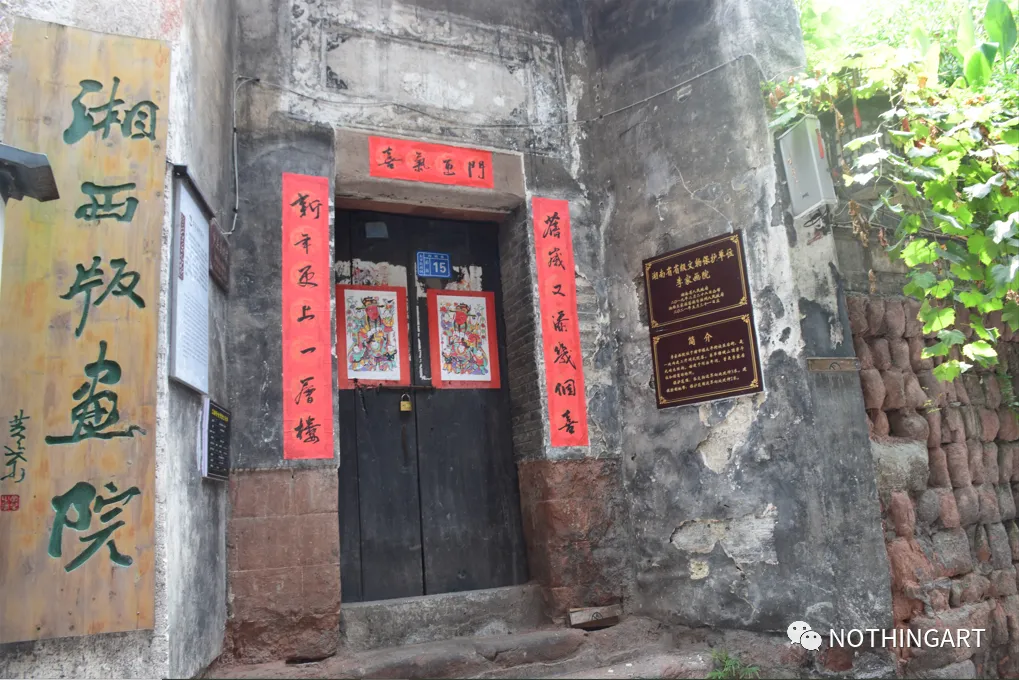
The ancient town of Pu still preserves three historic districts, two ancient historical sites, and 204 historic buildings. The history of woodcut production in Pu dates back to the Ming and Qing dynasties, with New Year paintings being one of the main types. During its heyday, there were more than ten workshops producing New Year paintings in Pu. In the development of Pu’s woodcuts, traditional techniques, content, and styles have been continued while incorporating local engraving, woodcarving skills, and bold, exaggerated expressions of witchcraft and shamanism culture. The content often draws on the diverse cultural folklore of the region, with relatively complex production processes.
The production of woodcuts involves three main steps: drawing the draft, carving the block, and printing. From creation to final product, it can take several months. Woodcuts are used in various scenes, most commonly as New Year paintings featuring figures like Qin Shubao, Yuchi Gong, and Zhong Kui. In the woodcut academy, landscapes, flowers, birds, and fish abound, exquisitely displayed. They appear on window frames or peek out in courtyards, vividly depicted, with great aesthetic and collection value.
New Year paintings posted on the doors of the woodcut academy.
Mr. Zhu Jianxiang’s family once ran a New Year painting workshop during the Ming and Qing dynasties, and some of the old Pu New Year print blocks passed down by his ancestors are still preserved in his home today.
Before the establishment of the Xiangxi Woodcut Academy, whenever Mr. Zhu Jianxiang returned to the ancient town of Pu from studying and working outside, he would wander around. When he noticed the increase in modern buildings and the decrease in old residences, and especially the disappearance of the traditional Pu New Year paintings from household doors, something began to grow in his heart.
In July 2015, the Xiangxi Woodcut Academy was officially established in the Li Family Courtyard.
Inside the Xiangxi Woodcut Academy
Mr. Zhu Jianxiang is dedicated to the creation and research of woodcuts. He hopes to innovate and pass on the tradition of Pu New Year paintings using what he has learned, reviving traditional New Year paintings and ensuring that this exquisite traditional folk art continues to thrive in the countryside, influencing many people.
The “Pure View® Cool Light Miao Village” art charity exhibition was held in this culturally rich building.
Eating in the woodcut academy’s restaurant.
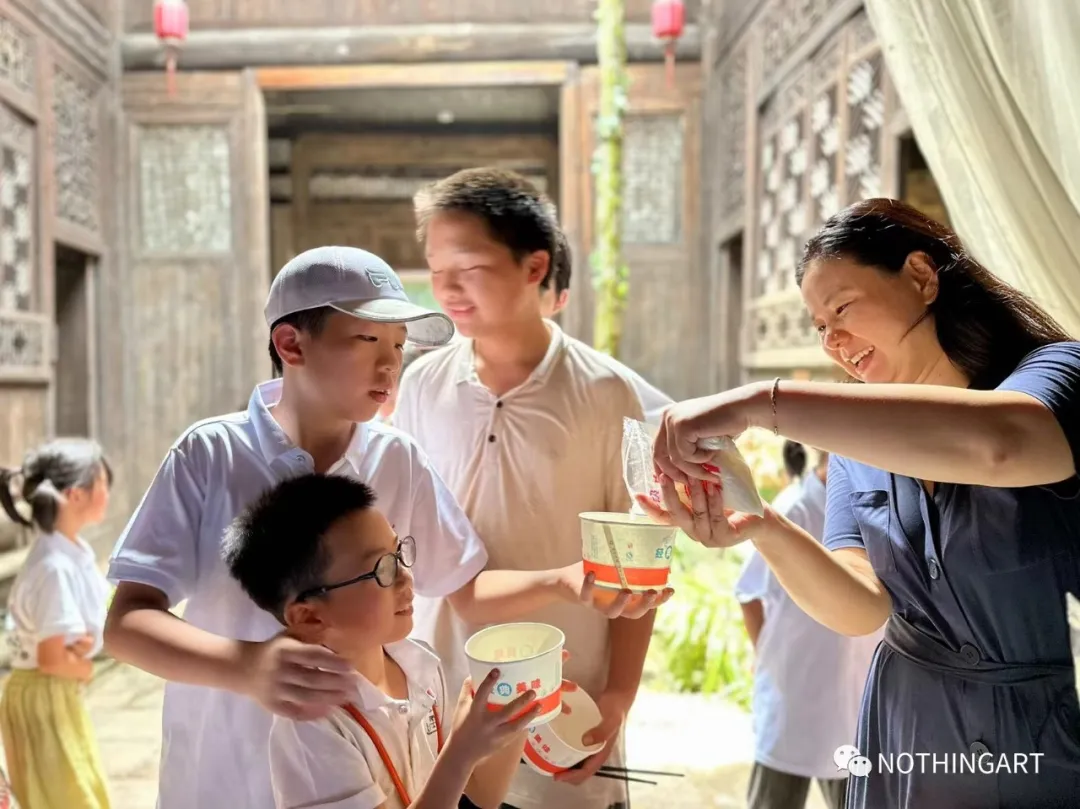
Teacher Cao adding sugar to everyone’s cold tofu.
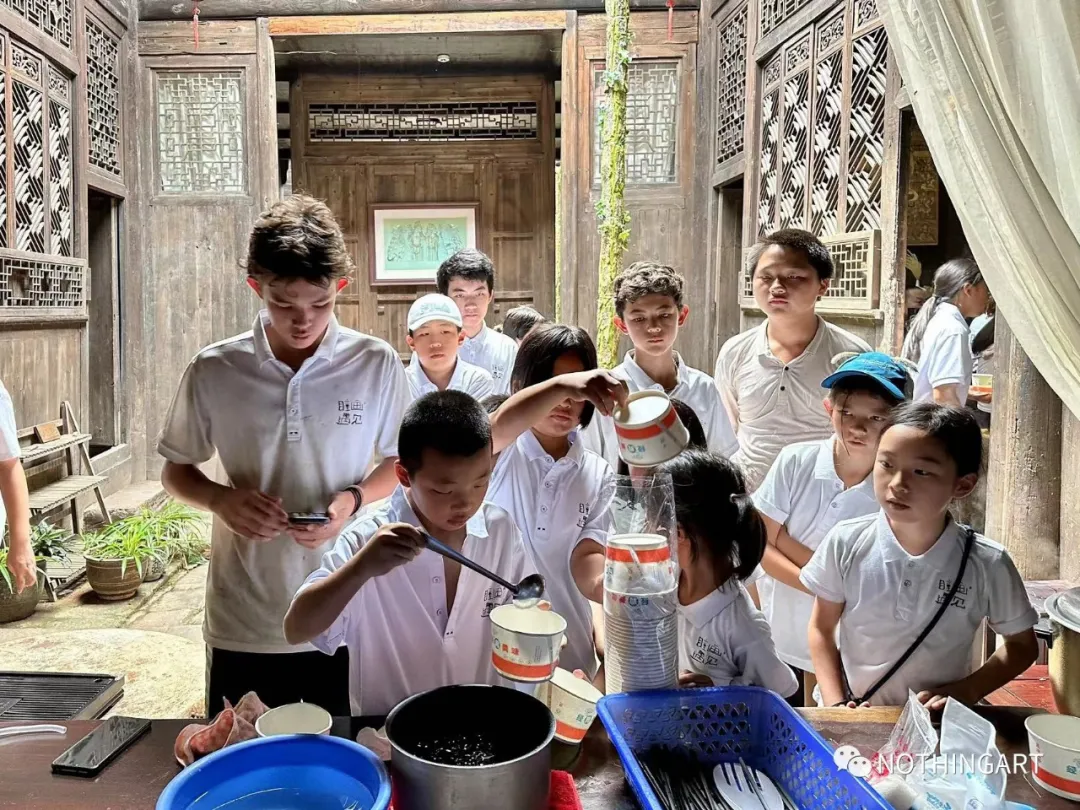
Queueing for food.
Under the guidance of Mr. Zhu Jianxiang, we toured the ancient town of Pu.
This was our first visit to the ancient town of Pu and the Xiangxi Woodcut Academy, but for the children from Cool Light Village, it was their first time entering a professional art institution. Their hearts were filled with curiosity, anticipation, and nervousness. Perhaps the farthest they had ever been before was to the town of Shanjiang, and they had never imagined having the opportunity to experience such an art institution—everything was new and full of endless possibilities. They gazed at the works hanging on the walls as if they could see another world through the paintings.
When we visited the woodcut study studio at night and saw the art materials they had never seen before, their eyes lit up. This was their first chance to delve into deep art knowledge and techniques.
Night visit to Mr. Zhu Jianxiang’s studio.
Late at night in the woodcut studio, besides us, there were artists from all over the country who had come to learn about woodcut knowledge and techniques.
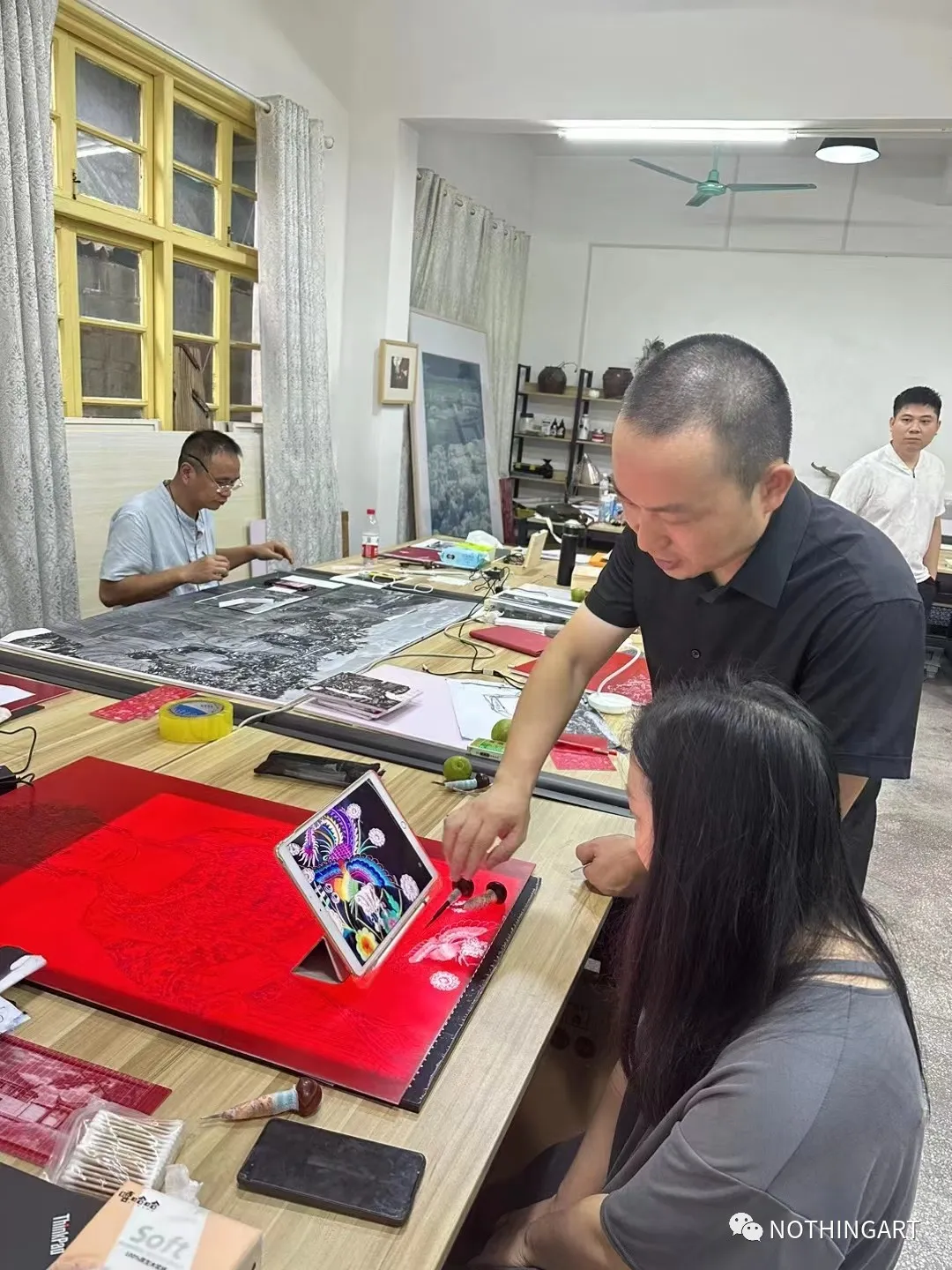
Mr. Zhu Jianxiang guiding woodcut carving.
This trip to the woodcut academy was not just an opportunity to learn but also a chance for self-discovery and growth. It provided them with an opportunity to discover their potential, find their interests and passions, and perhaps some of them might become artists, dancers, musicians, or even influential artists in the world.
Just like Liu Kejiang, a child with autism from Yunnan, who after participating in Pure View® Dagaji, continued to paint persistently. We followed his progress and hosted his solo exhibition—Pure View® Continues: Liu Kejiang Solo Exhibition—showcasing the inner world of a 13-year-old autistic child on August 18, 2021.
A small act, a word, or a hug can change a child’s life forever.









